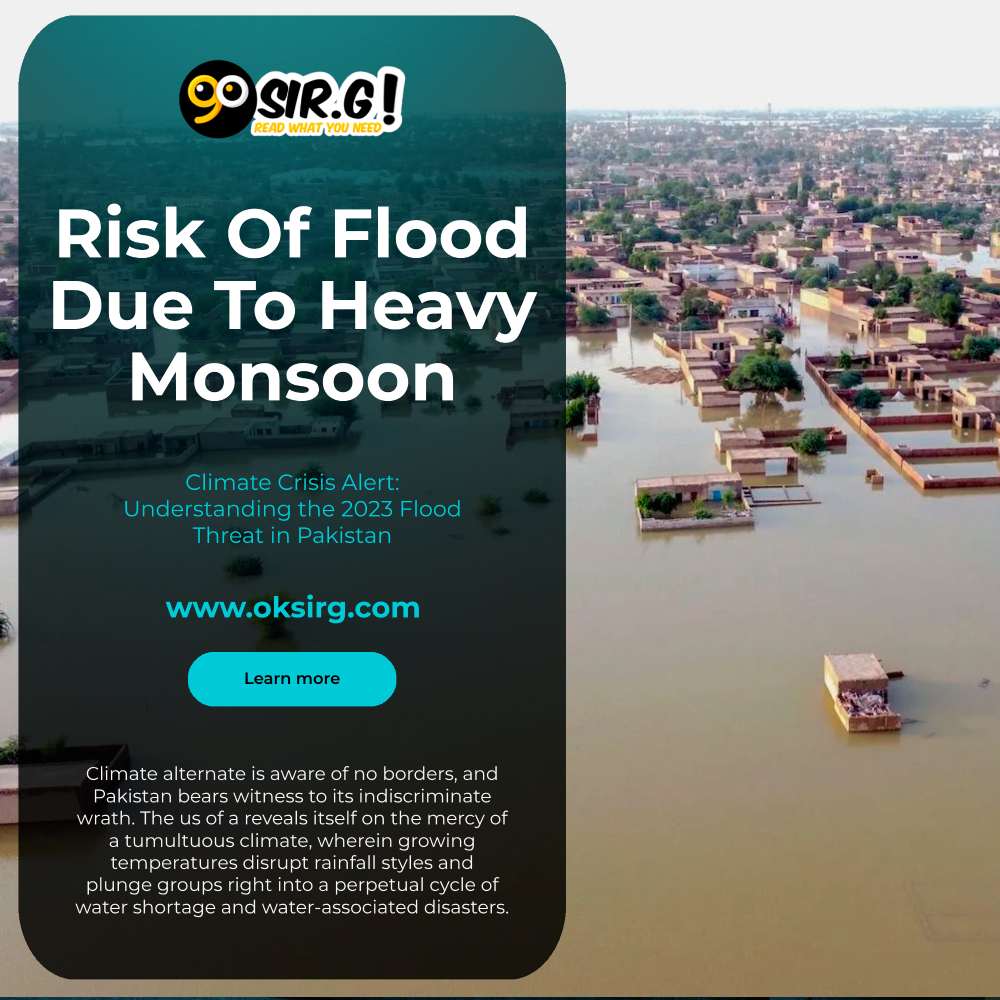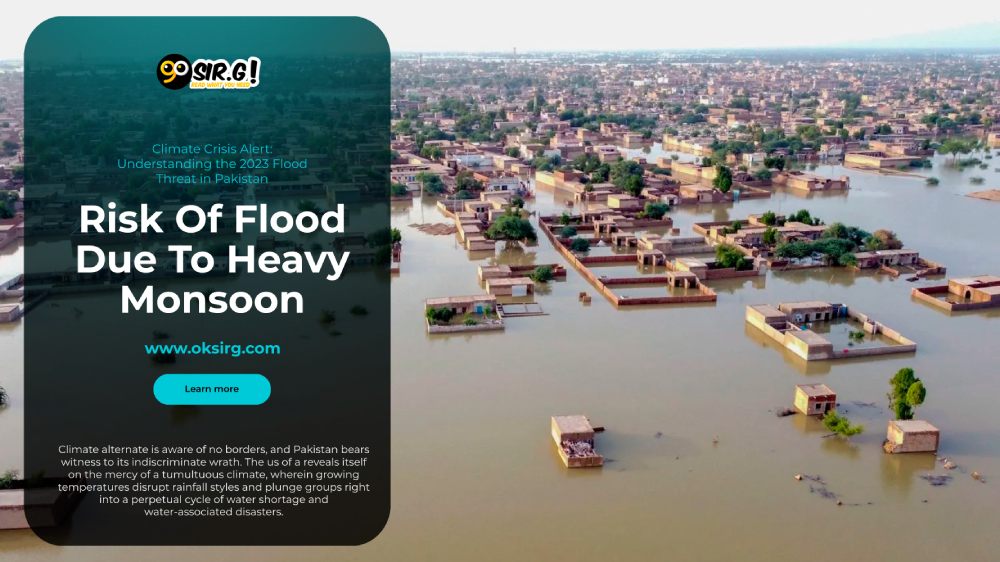In 2023, Pakistan faced a major climate crisis in the form of devastating floods. This article examines the factors that have led to flood risk, the impact on vulnerable communities, the role of climate change, and the urgent need for global strategies to mitigate the growing risk of such disasters.
Floods 2023: Triggers Of The Climate Crisis:
Pakistan was hit by heavy monsoon rains in 2023, causing massive flooding in various areas. Torrential rains have caused rivers to flood, villages to be inundated and widespread destruction threatening lives and livelihoods.
Vulnerable Communities Under Siege:
The floods have disproportionately affected vulnerable communities, including farmers, wage earners and people living in low-lying areas. These communities are struggling with the loss of homes, farmland and basic resources, which amplifies existing socioeconomic inequalities.
Climate Change And Flood Risk:
Climate change has played a key role in increasing flood risk in Pakistan. Rising global temperatures have led to increased evaporation and humidity in the atmosphere, resulting in heavier and more erratic monsoon rains.
The Role Of Deforestation And Urbanization:
Deforestation and rapid urbanization have contributed to an increased risk of flooding. Forest loss reduces the land’s ability to absorb rainwater, while unplanned urban development exacerbates drainage problems and leaves communities vulnerable to flooding.
Impacts On Agriculture And Food Security:
floods devastated Pakistani agriculture causing extensive damage and crop failure. Disruptions in food supply chains have further exacerbated food security concerns, testing millions of people already suffering from hunger and malnutrition.
Humanitarian Crisis And Displacement:
The floods triggered a humanitarian crisis that left thousands displaced and in urgent need of assistance. Overcrowded aid camps and limited resources have compounded the challenges for aid organizations and authorities in delivering aid.
Damage To Infrastructure And Economic Losses:
floods have caused extensive damage to infrastructure, including roads, bridges and communications networks. The economic losses suffered were significant, negatively impacting society and hampering recovery efforts.
Rescue And Response:
The government of Pakistan, as well as national and international aid organizations, have mobilized humanitarian aid to support the affected communities. People displaced by the floods received food, clean water, medical care and shelter.
The Need For Climate-Resilient Infrastructure:
In order to counteract the recurring risk of flooding, it is necessary to invest in climate-resistant infrastructure. These include improved drainage systems, flood barriers and early warning systems to mitigate the effects of future flooding.
Community Disaster Preparedness:
Strengthening community disaster preparedness is key to building resilience. Supporting local communities with knowledge, resources and training can help them respond effectively to flood risks and limit potential damage.
Long-term Coping Strategies:
In order to meet the challenges of climate change, long-term adaptation strategies are essential. Pakistan needs comprehensive plans focused on sustainable land use, afforestation and climate-resilient agricultural practices.
International Cooperation On Climate Change Resilience:
The global nature of climate change requires international cooperation. Sharing knowledge, technology and resources can strengthen climate resilience efforts in Pakistan and other vulnerable regions of the world.
Public Relations And Advocacy:
Raising awareness of the effects of climate change and the urgent need to combat it is crucial. Advocacy efforts can drive policy change, increased funding for climate resilience, and collective action to address the climate crisis.
Conclusions:
The floods in Pakistan in 2023 are a stark reminder of the urgency to address the climate crisis and its devastating effects. By implementing climate resilience measures, promoting sustainable practices and supporting international cooperation, Pakistan can better prepare for future flood risks and build a more sustainable and resilient future for its communities.
FAQS:
What caused the 2023 floods in Pakistan?
The 2023 floods in Pakistan were triggered by torrential monsoon rains, amplified by climate change, causing river flooding and widespread flooding.
How has climate change contributed to flood risk?
Climate change has resulted in increased evaporation and atmospheric moisture, resulting in heavier and more irregular monsoon rainfall and increasing the risk of flooding.









Leave feedback about this
You must be logged in to post a comment.